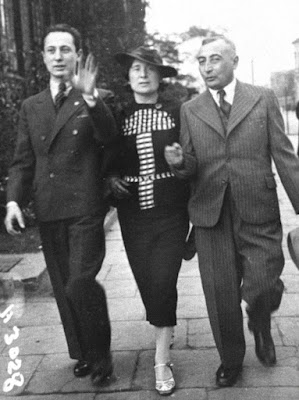He was the first King of Romania, from 1881 until his death. One of the most important political figures in Romania’s history for his successes, Carol refined his passion for architecture. The Sovereigns’ Gate opened into the castle, and a monumental marble staircase went to the Hall of Honour, the official reception space with walnut panelling and statues. The ties between the Romanian and other royal families attracted big names to the castle eg Austro–Hungarian Emperor Franz Joseph, in 1886. Carols’ wife, Queen Elizabeth, was a patron of the arts and designed rooms specifically for artists, musicians and writers’ entertainment.
The decorations in each of the 160 rooms were given themes, with the finest examples of European art, Murano crystal chandeliers, German stained-glass and Cordoba leather-covered walls. Many of the rooms were decorated to resemble the various world cultures eg the 1906 Music Room’s carved teak Indian furniture was gifted by a Maharajah. It contained a 1621 harpsichord from Antwerp, upright piano and organ
Given his military background, King Carol had a solid knowledge of weapons. The Great Armory Room hosts fine collections of 4,000+ arms and armour. Mainly C14th-17th from Western and Eastern Europe and Asia, they were collected in 1903. Note the German armour of the C16th or 17th, and a full armour for the horse and knight.
Peles’ architects drew inspiration from classical styles like German and Italian Renaissance, and French Baroque eg the German stained glass and painted murals on the castle exterior. The interior, especially the main hall, is beautifully decorated with sculpted wood & stained glass windows, symbols of elegance and royalty.
Carrara marble was everywhere eg terraces decorated with royal statues, so the castle could be an impressive residence fit for its political and cultural functions. Moor Hall was by painter and sculptor Charles Lecompte du Nouy, having Spanish-Moorish elements with a marble fountain.
The castle's 60-seat Theatre Hall and royal box were decorated in Louis XIV style, while the ceiling paintings and decorative frescoes were designed by famous Austrian artists Gustav Klimt and Frantz Matsch. And handmade silk embroideries adorned the ceiling and walls of the Turkish Salon. The horology exhibition had 50 different clocks from the private royal collection: grandfathers, pendulum table clocks, fireplace clocks, alarm clocks, pocket watches etc. And pieces that belonged to Queen Marie, Carol II and King Michael, mostly dating to the C19th. These collections of disparate interior decoration styles probably reflected King Carol’s eclectic taste.
From the start Peles was one of the most technologically advanced palaces and expensive in Europe. It was the first European castle fully supplied by locally produced electrical power, had its own 1884 power plant, central heating system in 1897, central vacuum system, elevator for the royals, hot and cold running water.
Besides Peles Castle, other buildings were erected, such as the royal stables and Foisor Hunting Lodge. And King Carol I’s successor, King Ferdinand built a smaller castle, Pelisor, on Peles grounds. Pelisor was designed in the art nouveau-style by the Czech architect Karel Liman from 1893-1914.
Peles remained a royal residence until 1947 when, after the forced abdication of King Michael I, Peles and the other royal properties were taken by the Communist government. In 1948 the whole estate was closed, and art works went to Bucharest’s Art Museum. The communist government opened the castle as a tourist attraction, declared it the National Peles Museum in 1953 and kept it open until 1975.
Pres Nicolae Ceaușescu closed the entire estate in 1975-90, making it a State Protocol Area, limited to 1] military personnel and 2] visiting heads of state. Fortunately the museum curators frightened the President, saving Peles from military damage and from the Ceausescus. After the 1989 Romanian Revolution, the castle became a heritage site and re-opened as a museum with c400,000 visitors annually. Peles Museum has guides for those wanting historic tours.
Passionate about art, King Carol had collections covering c60,000 art objects. Additionally the ceramics collection held tiles and porcelain taken from the greatest C19th centres, was established by Queen Marie from 1914-27, and later pieces were purchased by the Museum. The wealth of artwork includes thousands of paintings and sculptures.


















































.png)





























.jpg)


















